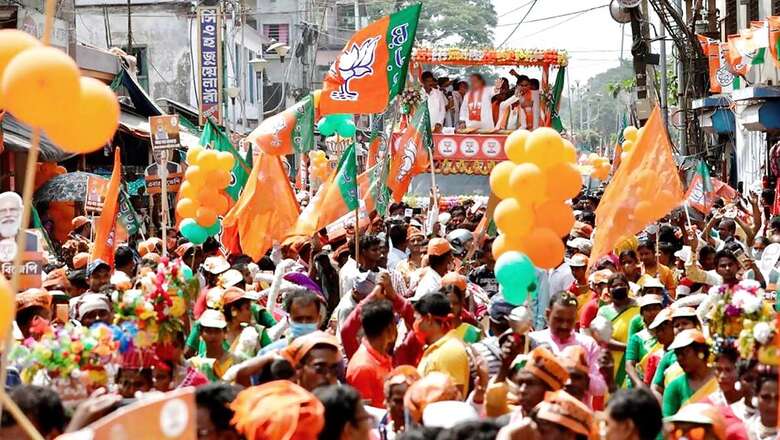
views
The results of West Bengal Assembly Election 2021 clearly demonstrate two things. First, the Trinamool Congress (TMC) led by Mamata Banerjee won decisively, but did face some challenge from the Bharatiya Janata Party (BJP). Second, the BJP lost the election but has virtually positioned itself as the Number 2 party in the state.
Bengal’s political space is known for hegemonic influence of progressive, Left and secular political forces. Hindutva forces have always wanted to assert their influence in the state—after all, Hindutva politics as an idea originated in Bengal and Syama Prasad Mukherjee was one of the pioneers of Hindutva politics in this country. He formed the Jana Sangh with the moral and ideological support of the Rashtriya Swayamsevak Sangh (RSS). Sunil Ambekar in his book on the RSS informs us that the term ‘Hindutva’ first emerged in Bengal. Chandranath Basu in 1880 delivered a lecture in Bangiya Sahitya Parishad and used this term, which latter evolved into a book ‘Hindutva’ in 1892. When it comes to ideology, Bengal represents an interesting contradiction, providing space for the evolution of two conflicting political ideologies—progressive, Left, secular, and Hindutva. So, in the entire scheme of Hindutva ideology, West Bengal, so far, remains an ongoing political project.
Although the BJP did not win the Bengal elections, the party has built social influence among a large section of the Bengali society. The RSS has worked hard to build a cadre of pracharaks, to take Hindutva to the grassroots. The Hindutva consciousness has manifested itself politically, as can be seen in the significant jump in the number of seats the BJP has won this time, compared to the three seats it won in 2016.
A quick analysis of election results show that the TMC has retained its support base among Bengali Bhadralok, women, unorganized labourers, urban and rural poor, and beneficiary communities of her regime. On the other hand, the BJP has made inroads in tribal areas, among Dalits and Hindi-speaking migrants, and a section of rural peasants.
Kerala Tells a Different Story
However, on the other hand, the Kerala Assembly election results tell a different story. The BJP failed to win any seats in the southern state. Hindus (roughly 55 per cent) constitute the largest community in Kerala, and the RSS is quite active and prevalent in the state, be it in villages or cities. Even then, the BJP has not been able to transform Hindutva consciousnesses into electoral success.
There could be two reasons for this. First, Hindus in Kerala could be looking at religion and politics as two different domains. Despite Hindutva consciousness, people in the state don’t see Hindutva as a political project. Second, the RSS has cultivated a well-knit organization with pracharaks at local levels, but the BJP is yet to cultivate popular leaders who may help build people’s trust in the party.
So these election results may be read in various ways, like Harianant Harikatha Ananta. It is one of the readings that I have proposed here, which tells when and how Hindutva consciousness transforms into Hindutva politics. Bengal and Kerala provide contrasting studies here. In Kerala, there is a need for greater synchronization between the Sangh’s hard work at the grassroots and the BJP’s election strategies, in order to convert the prevalent Hindutva consciousness into political capital.
Read all the Latest News, Breaking News and Coronavirus News here. Follow us on Facebook, Twitter and Telegram.




















Comments
0 comment